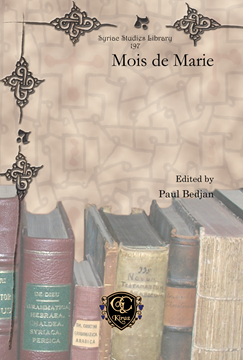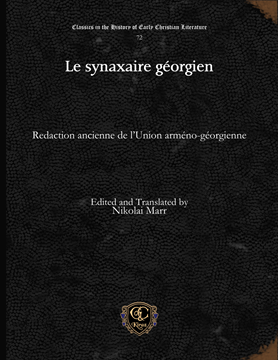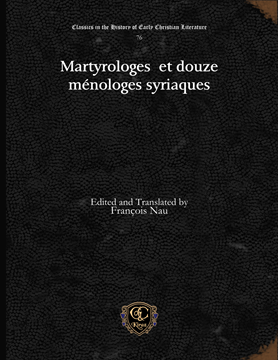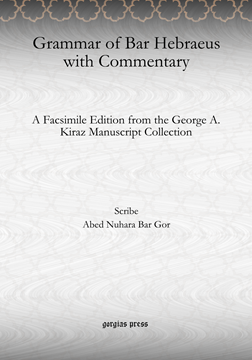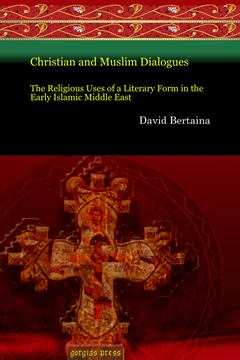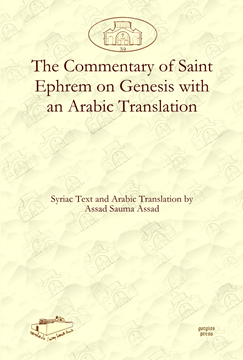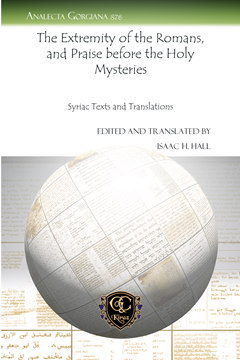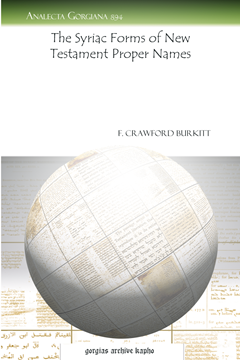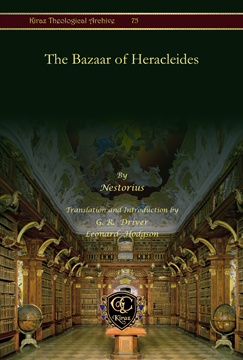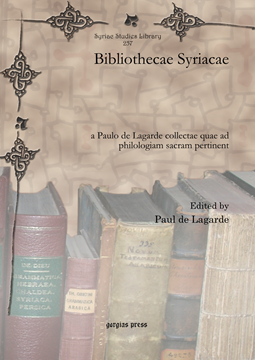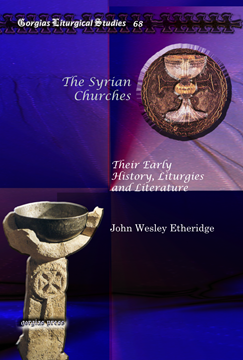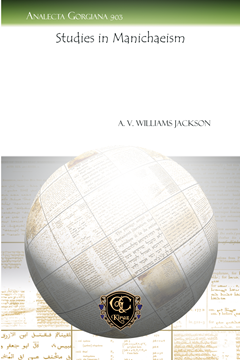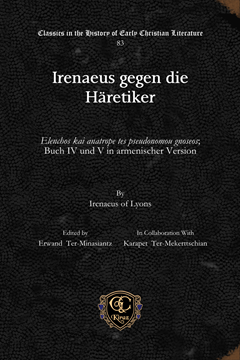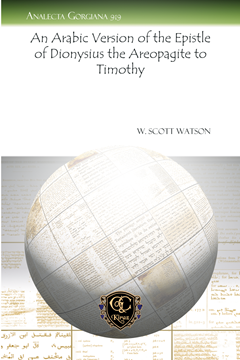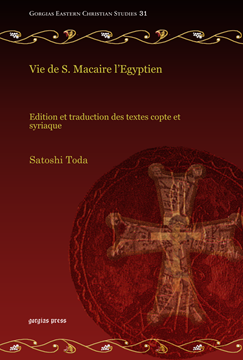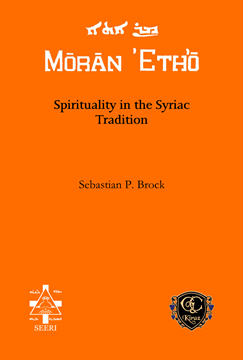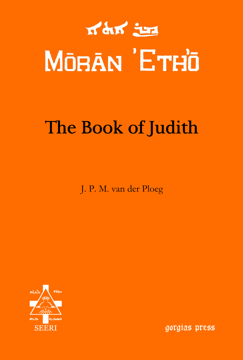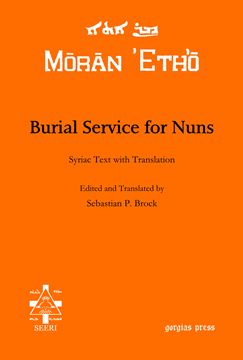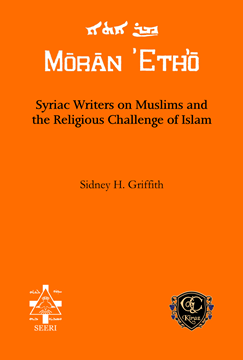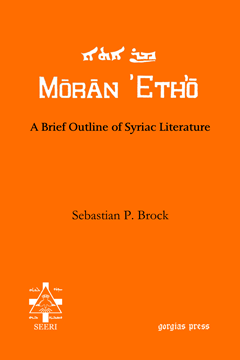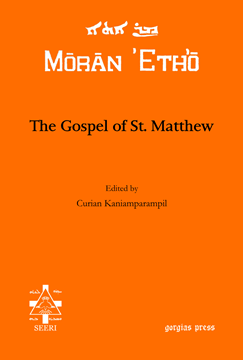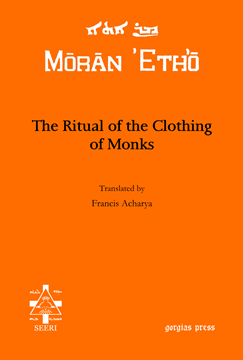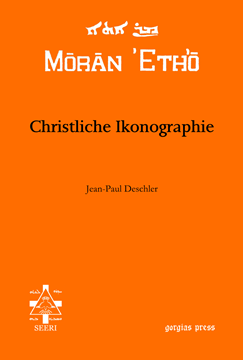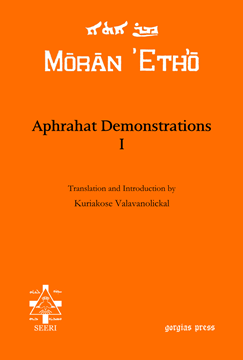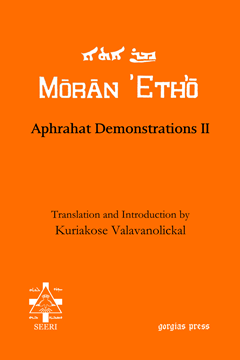Mois de Marie
Edited by Paul Bedjan
Series: Syriac Studies Library 197
ISBN: 978-1-61143-404-0
An anthology of hymns and devotions to the Virgin Mary in ancient and modern Syriac, collected in honor of the fiftieth anniversary of the proclamation of the doctrine of the Immaculate Conception
$209.00 (USD)
Le synaxaire géorgien
Redaction ancienne de l’Union arméno-géorgienne
Edited and Translated by Nikolai Marr
ISBN: 978-1-61719-890-8
The surviving text of a Georgian martyrology, on Stephen Protomartyr, Peter and Paul, shows the influence of Armenian Christianity on Georgia, and reflects 6th century preaching against Judaism.
$153.00 (USD)
Martyrologes et douze ménologes syriaques
Edited and Translated by François Nau
ISBN: 978-1-61719-901-1
Contained in this work are thirteen lists of saints’ days in the Syriac tradition based on various sources.
$162.00 (USD)
Grammar of Bar Hebraeus with Commentary
A Facsimile Edition from the George A. Kiraz Manuscript Collection
Scribe Abed Nuhara Bar Gor
Series: Kiraz Historical Grammars Archive 38
ISBN: 978-1-61719-923-3
This volume is a facsimile edition of a handwritten manuscript of Gregory Bar Hebraeus's Grammar of the Syriac Language from the private collection of George A. Kiraz.
$77.00 (USD)
Christian and Muslim Dialogues
The Religious Uses of a Literary Form in the Early Islamic Middle East
Series: Gorgias Eastern Christian Studies 29
ISBN: 978-1-61719-941-7
Linked by a common geography and claim to the true religion, Christians and Muslims had a long history of interreligious discourse up to the Crusades. These faith communities composed texts in the form of dialogues in light of their encounters with one another. This book surveys the development of the genre and how dialogues determined the patterns of conversation. Each chapter highlights a thematic feature of the literary form, demonstrating that Christian and Muslim authors did not part ways in the first century of Islamic rule, but rather continued a dialogue commending God’s faithful believers.
$101.00 (USD)
The Commentary of Saint Ephrem on Genesis with an Arabic Translation
Syriac Text and Arabic Translation by Assad Sauma Assad
ISBN: 978-1-61143-548-1
This book cantains the Syriac text of Saint Ephrem's Commentary on Genesis supplied with an Arabic translation and commentaries. Its text is one of the most beautiful texts in Syriac language. The book is good for the general readers and those who have interest in the Syriac fathers and churches.
$180.00 (USD)
The Extremity of the Romans, and Praise before the Holy Mysteries
Syriac Texts and Translations
Edited and Translated by Isaac H. Hall
Series: Analecta Gorgiana 876
ISBN: 978-1-61143-442-2
These are two unique Syriac texts from the same manuscript.
$36.00 (USD)
The Syriac Forms of New Testament Proper Names
Series: Analecta Gorgiana 894
ISBN: 978-1-61143-469-9
Argument by the Norris Professor of Divinity at Cambridge that the spelling of the Syriac version of the Gospels should not be taken as authority for the original Aramaic names.
$38.00 (USD)
The Bazaar of Heracleides
Series: Kiraz Theological Archive 75
ISBN: 978-1-61143-472-9
Dialogue by Nestorius, Archbishop of Constantinople, vindicating his theology and his actions; translated from the manuscript of the Syriac translation discovered in 1889.
$219.00 (USD)
Bibliothecae Syriacae
a Paulo de Lagarde collectae quae ad philologiam sacram pertinent
Edited by Paul de Lagarde
Series: Syriac Studies Library 257
ISBN: 978-1-61143-473-6
Most of the Bible in Syriac, with eight fragments in Greek.
$149.00 (USD)
The Syrian Churches
Their Early History, Liturgies and Literature
Series: Kiraz Liturgical Studies 68
ISBN: 978-1-61143-475-0
History of the Syriac-speaking churches, with comparative liturgies, and the Peshitta of the Gospels, translated into English.
$218.00 (USD)
Studies in Manichaeism
Series: Analecta Gorgiana 903
ISBN: 978-1-61143-497-2
This work is a detailed study of Manichaeism from findings of a 1903 study in East Turkestan.
$33.00 (USD)
Irenaeus gegen die Häretiker
Elenchos kai anatrope tes pseudonomou gnoseos; Buch IV und V in armenischer Version
By Irenaeus of Lyons; Edited by Erwand Ter-Minasiantz; In Collaboration With Karapet Ter-Mekerttschian
ISBN: 978-1-61143-514-6
This work presents the Armenian version of second-century Irenaeus of Lyon's last two books on heresies.
$96.00 (USD)
An Arabic Version of the Epistle of Dionysius the Areopagite to Timothy
Series: Analecta Gorgiana 919
ISBN: 978-1-61143-530-6
The letter that claims to be addressed by Dionysius the Areopagite to Timothy upon the martyrdom of Peter and Paul is not included among the epistles. It was composed originally in Greek, but it is exhibited in Arabic.
$34.00 (USD)
Vie de S. Macaire l’Egyptien
Edition et traduction des textes copte et syriaque
By Satoshi Toda
Series: Gorgias Eastern Christian Studies 31
ISBN: 978-1-61143-971-7
Saint Macarius the Egyptian’s (c. 300–390) virtue and spiritual exploits gave rise to various tales and sayings. These were recounted, some hundred years later, in hagiographical form, and were then disseminated in various languages of the Christian Orient, including Coptic, Syriac, Arabic, Ethiopic, Greek, and Georgian. This book presents a rare study of a text, taking into account its transmission in multiple languages, accompanied by newly re-edited Coptic and Syriac versions of the Life. This book also provides a commentary on the life of the “historical Macarius”, as well as the Life seen as a literary, hagiographical, work.
$270.00 (USD)
Spirituality in the Syriac Tradition
Series: Moran Etho
ISBN: 978-1-61143-558-0
In the present volume, Sebastian Brock provides an introduction and overview of the unique themes and features of spirituality in the Syriac tradition and includes excerpts from various texts throughout the Syriac tradition that exhibit these features.
$162.00 (USD)
The Book of Judith
Series: Moran Etho
ISBN: 978-1-61143-559-7
In the present volume, J. P. M van der Ploeg presents the Syriac text and English translation of a previously unpublished recension of the book of Judith as found in an eighteenth century manuscript.
$114.00 (USD)
Burial Service for Nuns
Syriac Text with Translation
Edited and Translated by Sebastian P. Brock
Series: Moran Etho
ISBN: 978-1-61143-560-3
Sebastian Brock presents here the Syriac text and English translation of the liturgy for the burial of nuns in the Syriac tradition.
$111.00 (USD)
Syriac Writers on Muslims and the Religious Challenge of Islam
Series: Moran Etho
ISBN: 978-1-61143-562-7
Sydney H. Griffith provides a basic overview of Syriac authors that addressed the issue of Islam in their writings. Griffith discusses the major themes and common content of this literature and focuses on the dialogue genre.
$141.00 (USD)
A Brief Outline of Syriac Literature
Series: Moran Etho
ISBN: 978-1-61143-563-4
Sebastian Brock provides an overview of Syriac literature from the second to the twenty-first century. Brock divides this overview into six historical periods, surveys the important authors and writings of each period, and provides excerpts from some important writings.
$101.00 (USD)
The Gospel of St. Matthew
Edited by Curian Kaniamparampil
Series: Moran Etho
ISBN: 978-1-61143-564-1
Based in the rich poetic history of the Syriac language, Curian Kaniamparampil presents a metrical, poetic Syriac version of the Gospel of Matthew.
$123.00 (USD)
The Ritual of the Clothing of Monks
Translated by Francis Acharya
Series: Moran Etho
ISBN: 978-1-61143-566-5
Abbot Francis Acharya presents an English translation and study of the liturgy for the ritual of the clothing of monks in the Syriac tradition that serves as the initiation for new monks into the monastic life.
$121.00 (USD)
Christliche Ikonographie
Series: Moran Etho
ISBN: 978-1-61143-569-6
Jean-Paul Deschelr presents a scholarly survey of the development and use of icons in the Christian tradition, including origins, recurring themes, and the technical aspects of creating icons.
$109.00 (USD)
Aphrahat Demonstrations I
Translation and Introduction by Kuriakose Valavanolickal
Series: Moran Etho
ISBN: 978-1-61143-572-6
Kuriakose Valavanolickal presents here in two volumes the first English translation of the twenty-three Demonstrations by Aphrahat, the fourth century Persian Sage, who is one of the earliest authors of the Syriac tradition.
$179.00 (USD)
Aphrahat Demonstrations II
Translation and Introduction by Kuriakose Valavanolickal
Series: Moran Etho
ISBN: 978-1-61143-573-3
Kuriakose Valavanolickal presents here in two volumes the first English translation of the twenty-three Demonstrations by Aphrahat, the fourth century Persian Sage, who is one of the earliest authors of the Syriac tradition.
$131.00 (USD)
